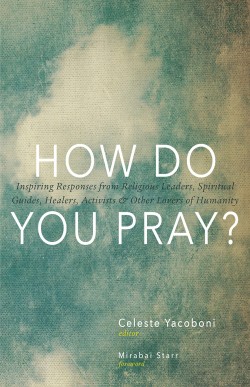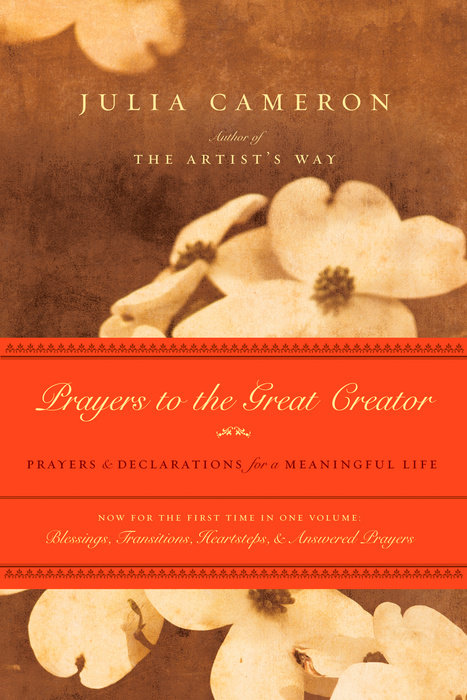An Introduction to Prayer
Regardless of whether one is on a spiritual path, the role that prayer plays in the world is indisputable. From legislative bodies opening sessions with prayers to religious congregations praying for peace on earth to individuals praying for whatever reasons they see fit, prayer has been a part of the human story throughout recorded history.
What is prayer?
Prayer is a way for human beings to communicate with a higher power, sometimes but not always thought of as God. While the words or rituals associated with prayer differ among various religions, the act of praying is not exclusive to any faith or belief tradition.
How to Pray
There is no one correct way to pray, but those who pray often do so from a place of humility and respect for the power of God—or, for those who choose not to use that word, something larger than the human capacity to exert influence over earthly situations and circumstances.
People can pray silently or with words, alone or in groups, for specific reasons or with no special intention at all. Prayers can request divine intervention to effect a certain outcome, seek protection for oneself or loved ones, give thanks, or serve any number of purposes, both private and public.
While many religions have structured prayers to be recited in certain ways for certain occasions, often in group settings, the importance of private prayer in an individual’s day-to-day life is also emphasized in numerous religious and spiritual traditions—including many if not most that also include group prayers. How to pray, then, can differ from setting to setting even within the same religion, but at its root, prayer is almost always about connecting in some way with what is commonly referred to as the Divine.
Why People Pray
From the student who says a quick prayer for a good grade right before taking a test to someone who prays with all their heart for the healing of a sick friend or relative, the intensity of prayers can range from casual and superficial to desires and longings expressed from the deepest level of one’s being.
A prayer for a good grade, for example, may be a kind of situational afterthought when the studying is over and the test is about to be administered, while a prayer for the healing of a sick loved one may involve complex emotions and simultaneously letting go of the attachment to outcome while still holding on to hope that the act of praying can in some way contribute to the recovery of the ailing person who is the focus of the prayer.
Prayers for thanksgiving are common to a considerable number of religions, especially at mealtime. Even in secular settings, taking a few moments to give thanks for or to appreciate one’s food before beginning to eat is a way to show gratitude for all that had to transpire for that meal to become a reality.
Perspectives on Prayer
Throughout history, people from all walks of life have prayed, and many have shared their thoughts on what prayer is and how to pray to God. We invite exploration of our curated content on prayer here on FindCenter. For now, here is a selection of perspectives on prayer:
In his seminal 1902 book The Varieties of Religious Experience, the American psychologist and historian William James (1842–1910) wrote extensively about prayer, including this passage that defines prayer as something distinct from morality: “It is prayer that distinguishes the religious phenomenon from such similar or neighboring phenomenon as purely moral or aesthetic sentiment.”
Mahatma Gandhi (1869–1948), the Indian lawyer and champion of nonviolent civil disobedience, believed the intention of one’s heart is of utmost importance in prayer: “It is better in prayer to have a heart without words than words without a heart.”
Archbishop Desmond Tutu (1931–2021), a South African Anglican cleric, theologian, and human rights activist, offered this advice on praying: “Think of prayer as a relationship. If you are in a relationship and you don’t have any communication, then that relationship is not going to grow. I think of prayer, clearly, as being in the acknowledged presence of God and in relationship with God.”
In her 2008 book Surprised by God: How I Learned to Stop Worrying and Love Religion, American Rabbi Danya Ruttenberg provides this succinct description of how she feels after praying: “After prayer, I felt clean, like some part of me had been polished to gleaming.”
Contemporary American writer Anne Lamott offers these words of wisdom about prayer: “Churches are good for prayer, but so are garages and cars and mountains and showers and dance floors.”
As we grow in our understanding of how to pray and what prayer is, these words from Siddhartha Gautama (c. 563–c. 483 BCE), more commonly known as the Buddha, may provide both comfort and acceptance along the way: “The greatest prayer is patience.”
You Might Also Like Our Content on These Topics: Meditation, Self-Reflection Practices, Mindfulness, Faith, Spiritual Life






 Praying is talking to the Universe. Meditation is listening to it.
Praying is talking to the Universe. Meditation is listening to it. 




